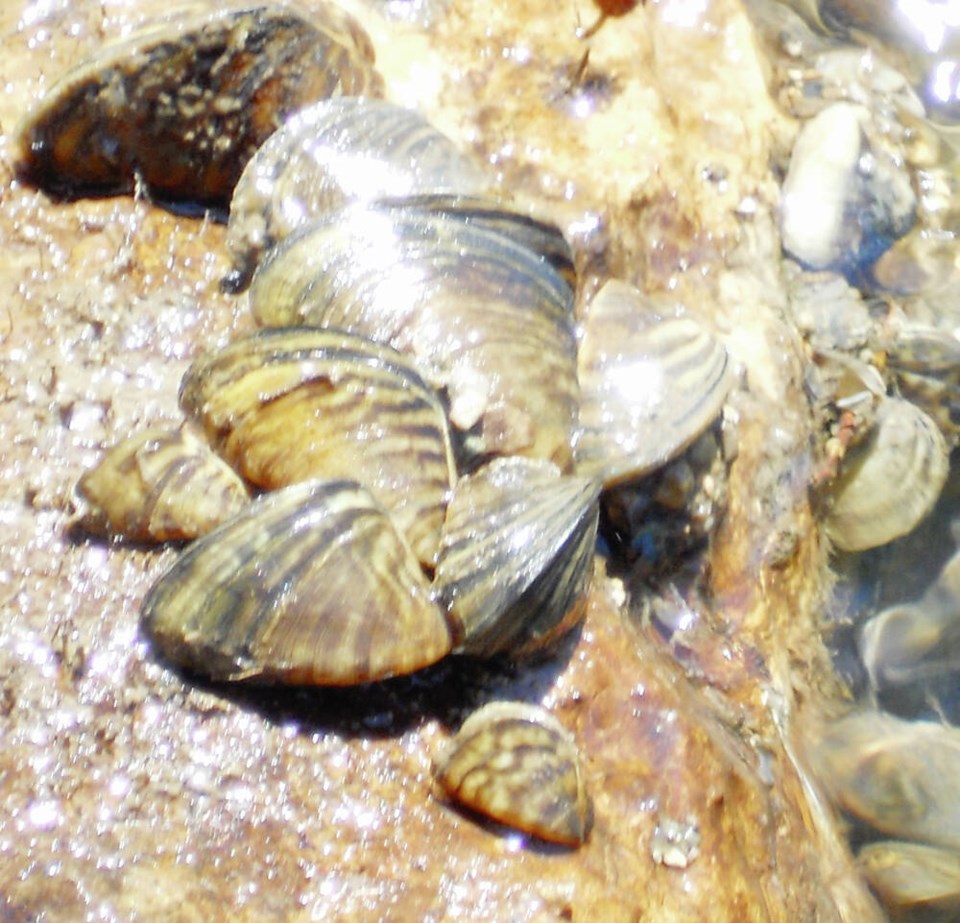An industrial barge being trucked to the Lower Mainland from Ontario this spring was diverted to a Richmond warehouse. There, provincial conservation officers removed thousands of invasive zebra mussels from the vessel.
Many of the mussels were viable and could multiply in B.C. waters.
The incident underscores the guilty role we humans play in the introduction and spread of invasive species.
Invasive species are plants, animals and microbes that cause ecological or economic harm in a new environment where they’re not native. They can impact agriculture, forests, rangelands and native plants and animals by competing for available space and food or by directly attacking native species, crops or landscaping plants.
Measures to prevent the establishment and spread of invasive species once they’re introduced are not always available. When they are available, they can be costly. Eradicating an introduced pest can cost millions of dollars.
Many, if not most, invasive species have been introduced to new areas over the last few centuries because we humans have either deliberately and knowingly or accidentally and unintentionally brought the species to new places.
That is, somebody imported the species to a new area because they wanted them, and the species established, then spread with few natural checks to control or limit them.
Starlings, house (or English) sparrows, grey squirrels, ivy, Daphne laureola and Scotch broom were all deliberately brought to North America — as “desirable” songbirds, cute garden critters, or sought-after garden plants. The species came, liked it, and has since established far-flung dynasties on the continent.
The unintentional category is perhaps more extensive. Few people intentionally transport disease-causing pathogens into new areas, but nonetheless, diseases have been and continue to be introduced.
White pine blister rust came to B.C. on nursery stock in about 1910, rapidly spread throughout most of B.C. by 1930, and wiped out much of province’s native western white pine stocks.
Sudden oak death, a disease caused by a fungus-like pathogen, has been introduced to Vancouver Island more than once in the last 20 years. The most recent introduction was the 2019 infection on imported nursery stock at a Saanich Peninsula nursery.
Almost every year, the province sprays to eliminate Lymantria dispar, a moth that arrives as eggs in the province in the same way zebra mussels do — by hitchhiking on vehicles and goods coming in from infested areas.
If they remain undetected, the eggs hatch and the caterpillars chew their way through tree canopies, either of broadleaved trees or both broadleaved and conifer trees, depending on the Lymantria variety. If the caterpillars remain undetected, they become moths, mate and lay another generation… and so it goes.
We’re told not to move plants, plant parts, wood or soil from one region of the province to another, between provinces, or across the border for the same reason. The materials we move might also contain, for example, Dutch elm disease, plum pox virus, grapevine necrosis, potato canker, tomato leafminer, blueberry maggot, cherry fruit fly, apple moth or emerald ash borer.
We’re told to empty and wash our bilges, boats, kayaks and so on before hauling them back to B.C. so that we don’t also bring back Eurasian milfoil or green crab larvae or zebra or quagga mussel larvae. The province has mandatory watercraft inspection stations throughout B.C. to prevent invasive species from hitching rides on watercraft and entering our waterways.
The interception of the zebra mussel-infested barge this spring was the largest decontamination event by the B.C. Invasive Mussel Defence Program since it began in 2015.
Native to the Caspian and Black Seas, zebra mussels most likely were carried to North America in the ballast water of ships. They were first discovered in the Great Lakes in the late 1980s.
Unlike B.C.’s native mussels, zebra mussels, as well as the equally invasive quagga mussel, attach to hard surfaces, including pipes, boats and equipment. The mussels multiply rapidly and are difficult to eliminate once they become established.
Once they infest waters, they can encrust water intake pipes, increasing sedimentation and corrosion and restricting and even stopping water flow.
In 2013, the projected potential economic costs of invasive mussel impacts on B.C. hydropower, agricultural irrigation, municipal water supplies and recreational boating were estimated to be $43 million per year.
keiran_monique@rocketmail.com



